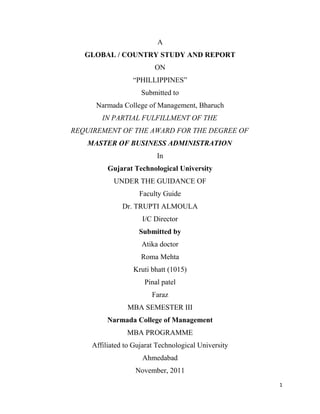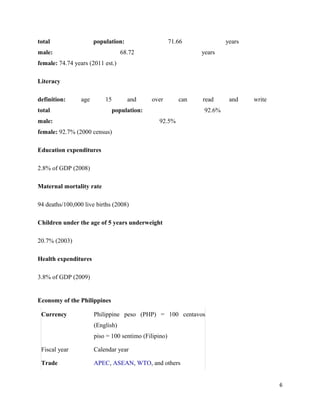The document provides demographic, social, economic, and political information about the Philippines. It discusses the country's population size, growth rate, life expectancy, major ethnic groups, languages, religions, education system, economy, exports, imports, and trading partners. Some key facts are that the population is over 100 million, Christianity is the dominant religion, the official languages are Filipino and English, the economy relies on electronics exports and overseas remittances, and the largest trading partners are Japan, US, and China.







